Impact Factor : 0.548
- NLM ID: 101723284
- OCoLC: 999826537
- LCCN: 2017202541
Daoud Tajeldeinn Ahmaed*1, Mahmood Mohammed1, Ali Mohamed Masaad2 and Saiful Nizam Tajuddin3
Received: October 06, 2017; Published: November 06, 2017
Corresponding author: Daoud Tajeldeinn Ahmaed, Faculty of Pharmacy, Omdurman Islamic University, Khartoum-Omdurman-Sudan, Sudaan
DOI: 10.26717/BJSTR.2017.01.000499
The aim of this study was to characterize and profile the chemical constituents of Aquilaria malaccensis & Aquilaria Rostrata chip wood by using solid phase micro extraction. In this study high grade of agar wood chip wood was investigated. Two types of extraction performed by SPME; were direct extraction of smoke which coating fiber adsorbs analyte directly from sample matrix and headspace volatile of incense; that adsorbs analyte indirectly from the matrix. By using 50/30 μm divinylbenzene-carboxen-polydimethysiloxane (DVB-CAR-PDMS) fiber. As a result at least 100 compounds were identified in incense smoke, whereas in headspace volatile more than 70 compounds. The gas chromatography (GC) was tagged on, to extract and analyze volatile compounds. The average area percentages of these compounds were calculated by using factor analysis of PCA. The major compounds extracted from Aquilaria malaccensis chip wood by using headspace volatile of incense were kessane (29.229), α-guaiene (24.683) and β-dihydroagarofuran (11.391), while β-selinene (0.976), caryophllene oxide (0.968), α-muurolene (0.887) and epoxy bulnesene (0.859) were major compound obtained by using direct extraction of smoke.
The main compounds extracted from Aquilaria rostrata chip wood by using headspace volatile of incense were β-dihydroagarofuran (53), khusiol (0.929) and ϒ-gurjunene (0.820) whereas by using direct extraction of smoke were α-gurjunene (5.54), β -caryophllene (3.89), and α-guaiene (2.7). Hence, this research proves that characterization of agarwood by using headspace volatile of incense and direct extraction of smoke can acts as indicator before further extraction and correlate agarwood compound from incense smoke and volatile compound with agarwood oil.
Keywords: Aquilaria malaccensis; Aquilaria Rostrata; Headspace volatile of incense; Direct extraction of smoke; Solid phase micro extraction SPME
Name and Distribution: Aquilaria genus which belongs to Thymelaeaceae family is known as the producer of resin impregnated heartwood. The other names for the resinous wood are agarwood, agar, aloes wood, gaharu, eaglewood and kalambak [1]. There are more than 15 species of Aquilaria genus distributed in the Asian region between Sumatra, India, Vietnam, Burma, Laos, and Cambodia to Malaysia, Borneo, Philippines and New Guinea [1,2]. Aquilaria malaccensis, Aquilaria rostrata, Aquilaria hirta and Aquilaria beccariana are among species of agarwood that can be found in Malaysia.
Agarwood Formation Theory: There are many hypotheses behind agarwood formation. It is believed that agarwood formation is due to the immunological response of the host tree due to wound or infection. It may be the result of pathological, wounding; however, studies have not resolved this mystery yet [3,4].
Uses: Agarwood incense is being used by Buddhist, Hindus and Muslims in religious ceremony, whereas in Japan it is used in Koh Doh incense ceremony [5]. Despite the rareness, agarwood may also be carved into sculptures, beads and boxes. Agarwood chips and flakes are the most common forms of agarwood in trade [6,7]. In Malaysia, grated agarwood also been utilized for cosmetic uses, especially during illness and after childbirth. A. malaccensis is the common species of the Aquilaria genus that can be found in Malaysia. A. malaccensis grows as a large evergreen tree growing over 15-30 m tall and 1.5- 2.5 m in diameter, and has white flowers. A. Rostrata can be found in mountainous area which is usually at upper hill of Dipterocarp forest. The surface of A. rostrata’s barkis smoother compared to others, thus it is more preferable for manufacturing furniture or crafts.
Grading system: Traditionally, the process of agarwood grading based on its physical properties including resin content, color, odor, shape and weight [8]. Water-sinking method also adapted by sinking the agarwood in water. High quality agarwood will sink in water due to the high resin content which called as ‘sinking fragrance’ or chen xiang by the Chinese [5]. Nonetheless, grading of agarwood depend on the expert observation and not based on scientific knowledge. This research will able to correlate agarwood compound from incense smoke and volatile compound with agarwood oil, thus it can be used as indicator before further agarwood oil extraction process.
Previous study focuses on chemical profile from oil. A few references were found related to agarwood chip wood volatile and incense smoke study. Chemical studies of gaharu oils from Aquilaria species including A. malaccensis have reported the presence of several sesquiterpenes such as sesquiterpenes alcohols, oxygenated compounds, hydrocarbons and acids [9]. Agarwood oil has been extracted and analyzed using various techniques and equipment. Some of common techniques including gas chromatography (GC), gas chromatography-mass spectrometric (GC-MS), solid phase micro extraction (SPME), gas chromatography -flame ionization detector (GC-FID), gas chromatography-olfactometry (GC-O) and comprehensive two dimensional gas chromatography (GC x GC). GC-Olfactory is used to identify odor-compounds which combine function of both gas chromatography and human panel. The GCFID works to detect hydrocarbon molecule. This analysis was performed to extract the chemical compositions in essential oils. The GC/MS is a well-known, easy, and proven method to study the chemical profiles in agarwood oil [9,10].
Agarwood Chemical Compound: Previously, Wong Y reported the presence of α-gurjunene, β-elemene, β-gurjunene, ϒ-guaiene, α-selinene, β- dihydroagarofuran, ɤ-cadinene, ϒ-eudesmol, Agarospirol , α-Eudesmol, β-Eudesmol in infected Aquilaria malaccensis [3]. HQ Wei proved chromone existence in agarwood known as 2-(2-phyenylethyl) and support that both sesquiterpene and chromone are the main active compound contribute to the fragrance [11]. The findings is strengthen by the earlier study by Ishihara and Uneyama who declared agarwood compounds consists of series of sesquiterpenes named as nor-ketoagarofuran, agarospirol, jinkoh-eremol and selina-3,11-dien-9-one [23], selina-3,11-dien-14-al , methyl selina-3,11-dien-14-oate,methyl 9-hydroxyselina-4,11-dien-14-oate, and a nor-sesquiterpens, 1,5-epoxy-nor-ketoguaiene [7,12,13]. Benzaldehyde, α-guaiene, β-dihydroagarofuran, α-bulnesene, epoxy bulnesene among other compound also reported by Tajuddin [14] A few years ago, De-Lan (2011) stated four fragrant sesquiterpenes, including agarofuran, 4-hydroxylbaimuxinol and three eremophilanes namely; 7b-H- 9(10)-ene-11, 12-epoxy-8 oxoeremophilane,7a-H-9(10)-ene- 11,12-epoxy-8-oxoeremophilane and neopetasane [6]. Then, Hsiao- Chi et al (2011) seem to produce different result from agarwood incense study. He found 3-hydroxyprop-2-enoic acid, Benzoic acid, 4-hydroxybutanoic acid, cinnamic acid, 3-hydroxybenzoic acid, Vanillic acid, 1,4-cyclohexanediol, 4-hydroxybenzaldehyde, Resorcinol, formaldehyde, Acetaldehyde and 3-methyl-2-butanone in agarwood incense [15,16]. The latest research from Nor Azah (2014) determined the six remarkable compound out of 43 detected in agarwood essential oil which are 4-phenyl-2-butanone, valencene, curcumene, β-dihydroagarofuran, 10-epi-ϒ-eudesmol and α-guaiene; the rest of the compound were , α-gurjunene, β-copeane, ϒ-elemene, aromadendrene, valencene, ϒ-Gurjunene, Elemol, β-Vetivenene, among other compounds [9] . The agarwood oil has been investigated for the chemical compounds by N. Ismail, the investigation revealed Aromadendrene, β-Agarofuran, 10-epi- ϒ-eudesmol and ϒ-Eudesmol; which have been reported as the significant compounds in the oil [17].
Solid Phase Micro extraction (SPME): The aroma compounds of essential oils have drawn attention of many researchers to identify their volatile profiles. One of the popular methods of volatile compound study is solid phase micro extraction (SPME) which has been proven its effectiveness in various application; plants, food, and environmental analysis. SPME is well known as a rapid and simple technique without the need for sample preparation [18]; SPME developed to be solvent free, fast and applicable in various method extractions [19,20]. The technique requires small volume of sample compared to others [21,22]. In addition, under relative mild condition of isolation, terpenoids usually tend to isomerizes and rearrangement of structure of compound molecule as well as artifact compounds can be formed during extraction [23-28], even over the classical methods of isolation the SPME technique got the lowest extraction temperature advantage; for all these factor it has been chosen to be used in the present study.
High grade agarwood chips were procured, namely Aquilaria malaccensis and Aquilaria rostrata from Kedaik Agarwood Sdn. Bhd., a well-known Malaysian agarwood supplier. Those chipwoods were obtained from Endau-Rompin Forest Reserve, Pahang. C7- C20 n-alkanes were supplied by Tokyo Chemical Industry Co., Ltd. (Toshima, Kita-ku, Tokyo).
A 50/30 μm divinylbenzene-carboxenpolydivinylmethylsiloxane (DVB-CAR-PDMS) fiber was selected for extraction of volatile compound of agarwood volatile and incense smoke in this study. The SPME coupled to gas chromatography (GC) with FID and MS detectors are used to determine and characterize of agarwood incense, respectively. In this publication, detailed observations were made and SPME technique headspace volatile incense and smoke compounds from agarwood chipwood have been reported for the first time.
The fibre was pre-conditioned at 250ºC for 30 min prior to the sample absorption. Incense smokes sampling were performed with fibre direct exposure to the smoke stream throughinverted glass funnel (Figure 1) for 15 minutes to allow incense compounds to adsorb into the fibre before manual injection into gas chromatography (GC) system. Meanwhile, 0.2 g from each samples were grounded and transferred into a 4 mL clear glass vial with a PTFE and silicone septum. Those samples were exposed to SPME fibre at 40 ºC for 15 min (Figure 1) for volatile headspace adsorption. The fibre then left for 3 min in the GC glass linear for thermal desorption at 240˚C, blank fibre was preformed prior to any injection of sample to resolve carry over cross contamination during the analysis.
Figure 1: SPME apparatus setup for sampling by (A) incense smoke and (B) volatile headspace.
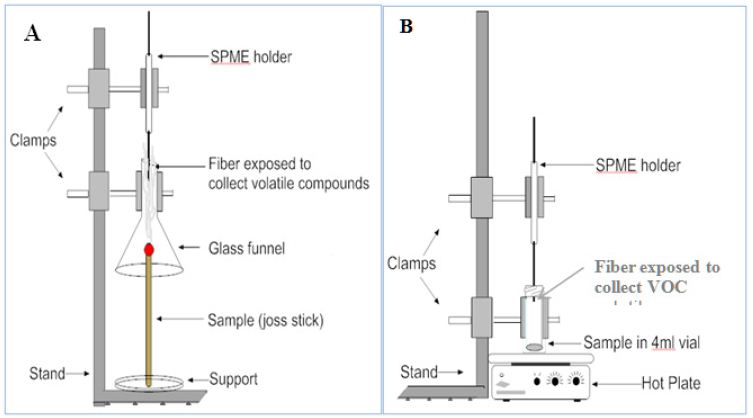
GC-FID analyses: Chemical analyses were performed by gas chromatography-flame ionization detector (GC-FID). Agilent 7890 equipped with DB-1 (100% dimethylpolysiloxane) capillary column, 30 m × 0.25 mm ID × 0.25 μm film thickness. Split less mode was used with narrow SPME inlet liner at 220ºC injector temperature, carrier gas Helium at 1.2 mL/min and 250ºC detectors temperature. The oven program commenced at 60ºC, increased by 3ºC/min to a final temperature of 240ºC which maintained for 5 min.
GC.QMS: GC.QMS analyses were performed by Agilent 7890B (Agilent Technologies, USA) equipped with a 5977A GC.MS Triple Quadruple mass spectrometer; split/ spilitless inlet; electron ionization system was fixed at constant ionization energy of 70eV. Separations was conducted using DB-1 (100% dimethylpolysiloxane) capillary column, 30 m × 0.25 mm ID × 0.25 μm film thickness. Spilitless mode was used with narrow SPME inlet liner at 220ºC injector temperature, carrier gas Helium at 1.2 mL/min and 250ºC detectors temperature.
Initially, the oven program commenced at 60 ºC, increased by 3 ºC/min to a final temperature of 240ºC which maintained for 5 min. mass scan range of 40500Da;transfer line temperature was 250 ºC; ion sourcetemprature200ºC. Chemical components were identified based on the comparison of retention indices and mass spectra. A homologous series of n-alkanes (C7-C20) were used in the calculation of retention indices (RI) for comparison with published data [13]. Meanwhile, GC-QMS data were matched with updated National Institute of Standards Technology (NIST14) libraries.
Principle component analysis (PCA) was used in order to reduce the number of the chemical compounds identified in all samples to a significant number of compounds. SPSS version 22 software was used to calculate the PCA parameters. The method is more economical rather than using all the compounds for analysis [8].Pearson correlation (also known as Spearman correlation) was used to study the correlation between chemical compounds. In this research, principle component analysis PCA was used to calculate the mean and standard deviation of the area percentage for the identified chemical compounds in GC.FID and GC.MS; and their pattern recognition profiles. Correlation analysis revealed correlation between the significant compounds. This is due to compounds represented in the first and seconds principle component showing similarity to major compounds found in all sample under investigation. All the area percentage STD Deviation for the compounds measured were ranged below 2% for the volatile compounds while less than 5% for smoke sample which reflected the repeatability of the SPME methods (Figure 2-5).
Figure 2: Sample of smoke A.M.
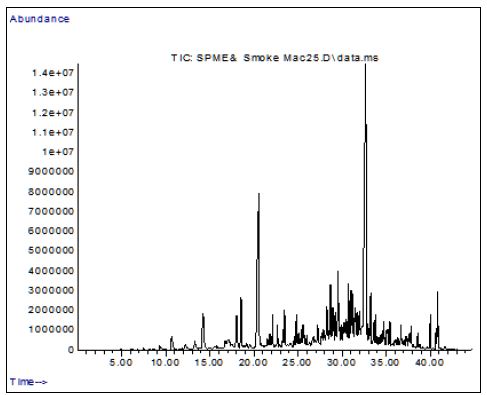
Figure 3: Sample of volatile head space A.M.
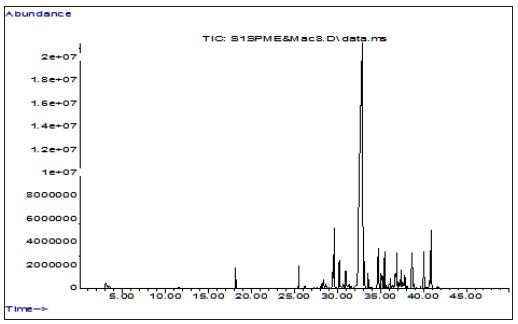
Figure 4: Sample of smoke A.R.
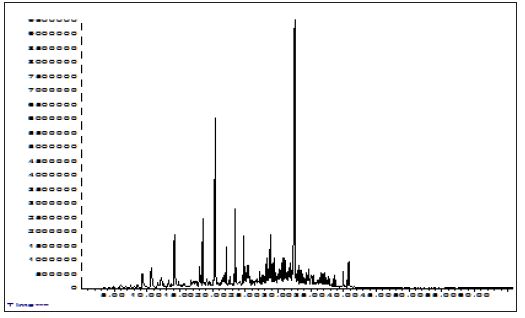
Figure 5: Sample of volatile head space A.R.
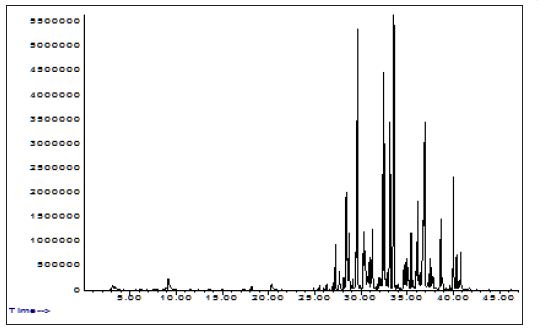
The aim of this work is to investigate the chemical profile of the high grade agarwood chip wood and correlate them to the chemical profile from the oils and used the resulted profile in grading the chip wood of Aquilaria malaccensis. GC-FID and GC-MS analyses revealed those chemical compounds which have been found in headspace volatile of incense and direct extraction of smoke of A. malaccensis and A. rostrata are similar to chemical compounds in the agarwood oil (Table 1-2). Major constituents identified in direct extraction of smoke for both species are kessane, β-dihydroagarofuran, α-guaiene, selina-3, 11-dine 9 -one, caryophllene oxide ,α-eudesmol,α-gurjunene, ϒ-ugrjunene, nor-ketoagarofuran, epoxy bulnesene, 10-epi-γ- eudesmo, agarospirol. Meanwhile, headspace volatile of incense in both samples were dominated by 2-butanone -4-phenyl, kessane, α-gurjunene, β -caryophllene, longifolen, α-Guaiene, β-elemene, selina-4(14)-7(11) diene, α-gurjunene ϒ-maaline. Aromadendrene, 4-epi-cis-dihydroAgarofuran, γ-Gurjunene, β-Selinene, Valencene. This finding was fortified by the previous report of Tajuddin and Yusuf in 2010; they found sesquiterpenes as the major component in agarwood essential oil.
Table 1: GCFID headspace volatile of incense and direct extraction of smoke for agarwoods (A. malaccensis and A. Rostrata).
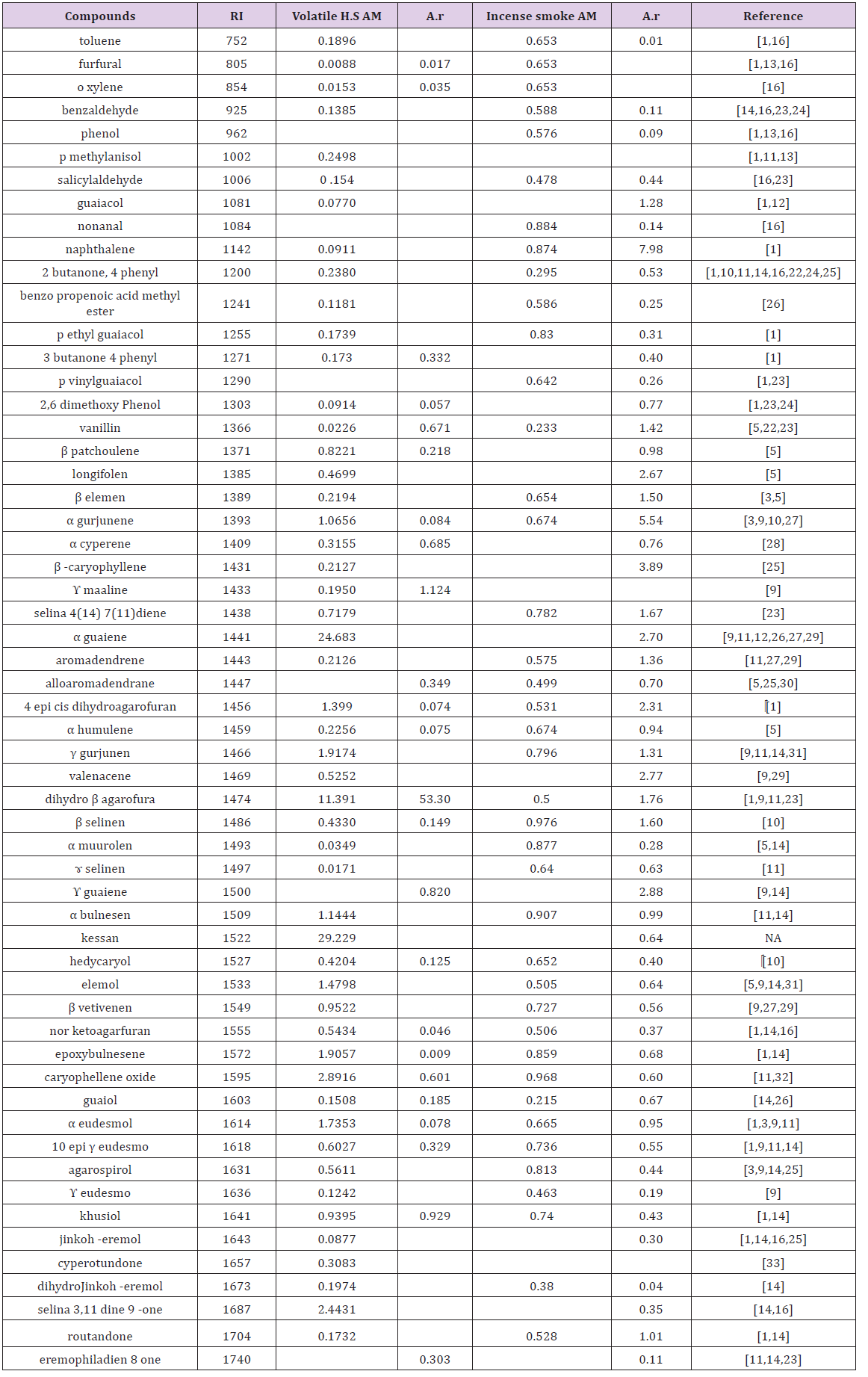
Table 2: GCMS headspace volatile of incense and direct extraction of smoke composition for agarwoods (A. malaccensis and A. Rostrata).

RI retention indices using DB 1 Ms column; A.m: Aquilaria malaccensis>; A.r: Aquilaria Rostrata ; NA: not available
The volatile combustion products present in the smoke sample are formed through various processes like hydrolysis, oxidation, dehydration and pyrolysis. Many of compounds detected in the main chromatograms of these sample were pyrolysis products especially in the smoke sample, while their present in the incense volatile are less and that can be resulted from the increased temperature which applied to burned sample, these products as toluene, furfural, o-xylem, benzaldehyde, phenol, p-methylanisol, salicylaldehyde, acetophenone, P-cresol, nonanal, naphthalene and vanillin; some of the sesquiterpenes are also can be pyrolyzed products from the resin. These finding also confirmed by Isihara (1993) and many of these pyrolyzed form are also reported by Pripdeevech (2011) in his study for the oil of agarwood [16,18,29-32] The present of 2-butanone -4-phenyl are significant in the smoke sample only, while aromadendrene, elemol, dihydro β-agarofuran and ɤ-selinene are presented in the volatile sample more than smokes in both species of Aquilaria malaccensis & Aquilaria rostrata kessane has not reported before since the early studies on agarwood were carried out in the lower capacity of the used GCMS instrument today some of the investigation used 20 eV, and not, as usual, at 70 eV beside the uses of the more advance NIST library as search tool to identify the compounds [32-34].
Commonly, quality of agarwood only can be determined after oil extraction, there is no available data for agarwood chip wood quality determination before the extraction process. Since researches nowadays are more focus on agarwood essential oil thus this work will assist in the selection of desired grade chip wood to produce the targeted oil grade. For example, hydro-distillation method needs 7 to 10 days and high energy for agarwood oil extraction and the quality only will be measured after extraction by mean of chemical constituent [34-36]. Briefly, this research will improve agarwood industry in term of time, energy and source. This work will correlate agarwood compound from incense smoke and volatile compound with agarwood oil, so it can be used as indicator before further agarwood oil extraction process. The obtained data proved the eligibility and feasibility of the developed method for quality identification of agarwood chip wood.


